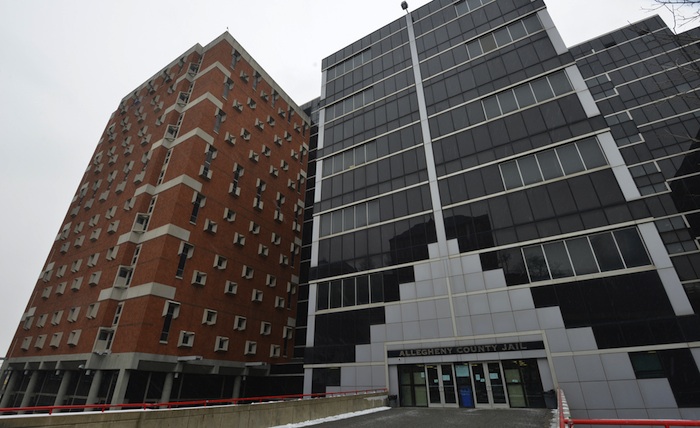County agencies collaborate to reduce jail recidivism
On any given day, more than 2,300 people live in the Allegheny County jail. Many will return at some point after they are released, placing a heavy burden on taxpayers, complicating their chances for rehabilitation, and putting the outcomes of their families and children at risk.
Recognizing the high human and financial costs of unbridled recidivism, officials in several Allegheny County government departments began collaborating more than a decade ago to address the problem. The Allegheny County Jail Collaborative they created has since gained national acclaim as an innovative approach to curbing recidivism and saving tax dollars.
The expense to taxpayers of incarcerating those convicted of crimes is substantial. In Pennsylvania, for example, the state correctional system budget increased by 295 percent to $1.34 billion between 1995 and 2004. And recidivism only compounds the expense.
In the 1990s, the Allegheny County Jail experienced a rise in inmate population, and recidivism rates reached 71 percent. This led jail officials and directors of the Department of Human Services and Health Department to form the Collaborative to find ways to help inmates more successfully reenter the community, reduce the rate of repeat offenders and improve public safety. And the county’s judges soon joined them.
Research suggests treatment, education and job training for inmates are keys to the successful reentry into society. But such support for jail inmates was lacking. The Collaborative began to coordinate their resources and, with support from local foundations, designed reentry programs for inmates and ex-offenders and diverted non-violent offenders to treatment.
Today, the Collaborative has evolved to include strategies for improving the jail system and devising alternatives incarceration, such a special court for non-violent offenders with mental health issues. But the centerpiece is its capacity to offer inmates comprehensive services aimed at reducing their chances of returning, such as drug and alcohol treatment, stress and anger management, GED preparation, and vocational, life skills and parenting skills training. In the past five years, supports were added for children of inmates and relatives who care for those children while their parents are in jail.
Evidence suggests the comprehensive approach is paying off. A study by the University of Pittsburgh School of Social Work’s Center on Race and Social Problems found that 16.5 percent of inmates who take advantage of the services return to jail within a year of their release, which is half the recidivism rate of those who don’t participate. The five-year recidivism rate for inmates in the program was just over 34 percent compared to 52 percent among inmates who didn’t receive the services.
And the annual cost savings to Allegheny County for serving just 300 inmates in the program was estimated at $5.3 million – a cost-savings ratio of $6 saved for every $1 spent, the study reported.
“The old school mentality of ‘lock ’em up and throw away the key’ is a misconception that ignores the base line issues of addiction and poverty,” said Common Pleas Court Administrative Judge Jeffrey Manning. “The Jail Collaborative is a smart-on-crime, not soft-on-crime effort that actually saves tax dollars by reducing recidivism.”
The jail made fundamental changes to accommodate the program, which included building a Reentry Center where classes would be held and taking unprecedented steps of making many more family calls and visits available – both as a reward for inmates’ progress and as a way of maintaining the critical connections with family and children. With support from the courts, a system for releasing inmates from the jail was revamped to ensure that they had adequate time to arrange for housing and transportation home.
“The Jail Collaborative is not only a cooperative that brings together the public sector, but also uses evidenced-based practices which are well researched,” said Frederick Thieman, president of the Buhl Foundation and former U.S. Attorney for the Western District of Pennsylvania. “Working with inmates while they are in jail to give them skills and coping mechanisms reduces the likelihood that they will recidivate.”
Collaboration around improving inmate reentry extends beyond government agencies to include a wide range of community educational, non-profit, health and religious organizations. And the Jail Collaborative’s work has garnered the financial support of as many as 10 local foundations, as well as grants from national foundations and the U.S. Department of Justice under the Federal Second Chance Act Prisoner Reentry Initiative.
Although those funds have helped expand the initiative’s reach, it is still only able to offer services to a fraction of the jail populations, and long-term funding remains in question. “Right now, we have to limit programs to just a subset of everyone who could use them, and when the time-limited grants that fund these programs end, it will be fewer,” said Marc Cherna, director of the Allegheny County Department of Human Services. “If we had a solid base of funding, we would serve more people with the great programs that local nonprofit groups are bringing into the jail and community.”
In the meantime, the Collaborative is gaining recognition as an innovative justice system model both in southwestern Pennsylvania and across the nation, including honors from the Ash Center for Democratic Governance and Innovation at Harvard University’s John F. Kennedy School of Government. “Leaders from business and the community immediately get that the Jail Collaborative is about improving public safety and saving money,” said Common Pleas Court President Judge Donna Jo McDaniel. “Keeping people from going back to jail gives you both.”





